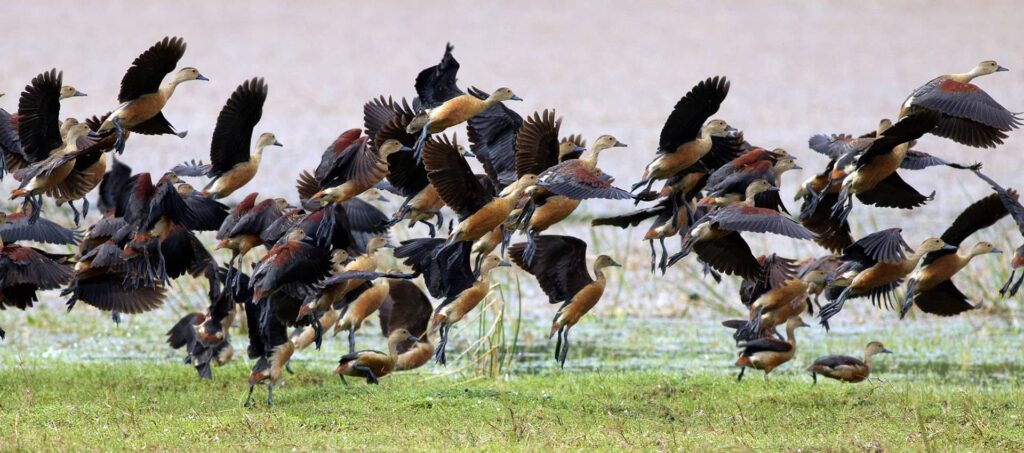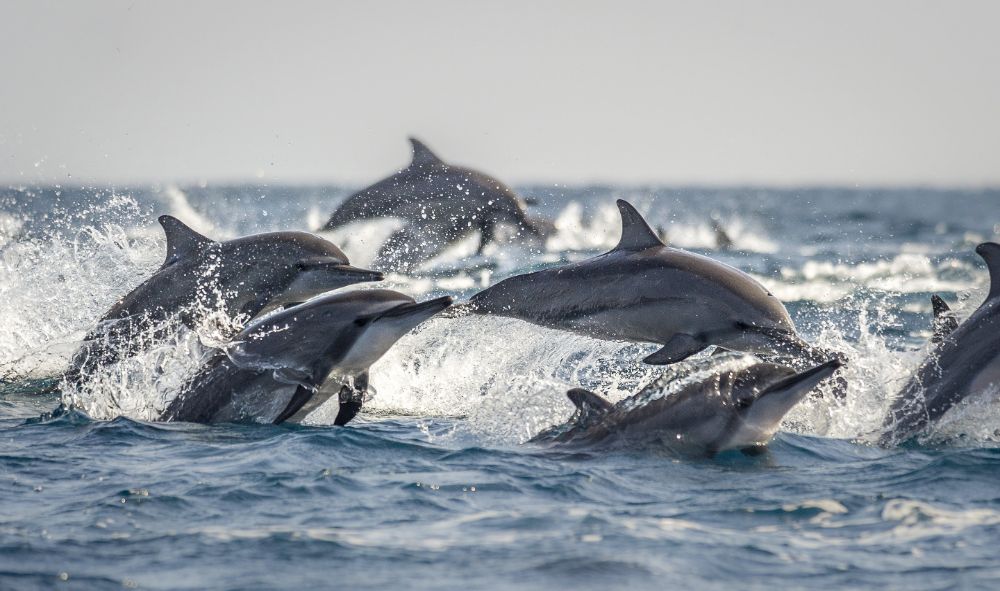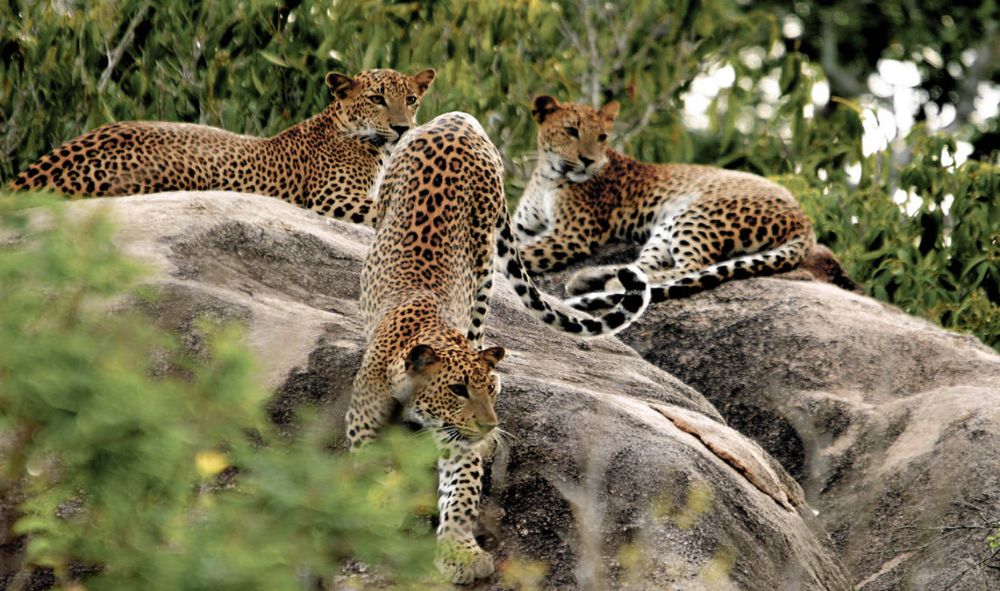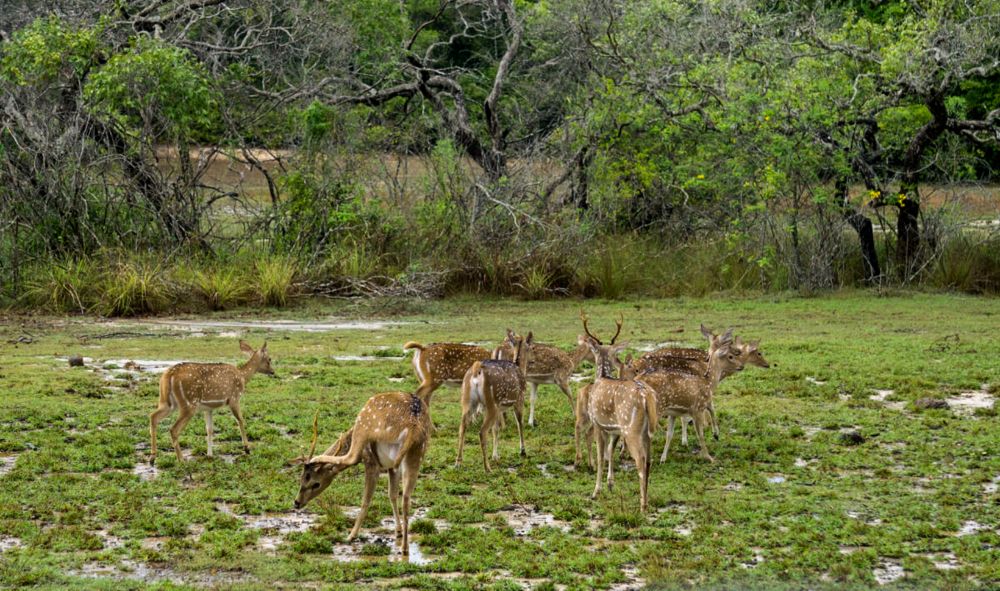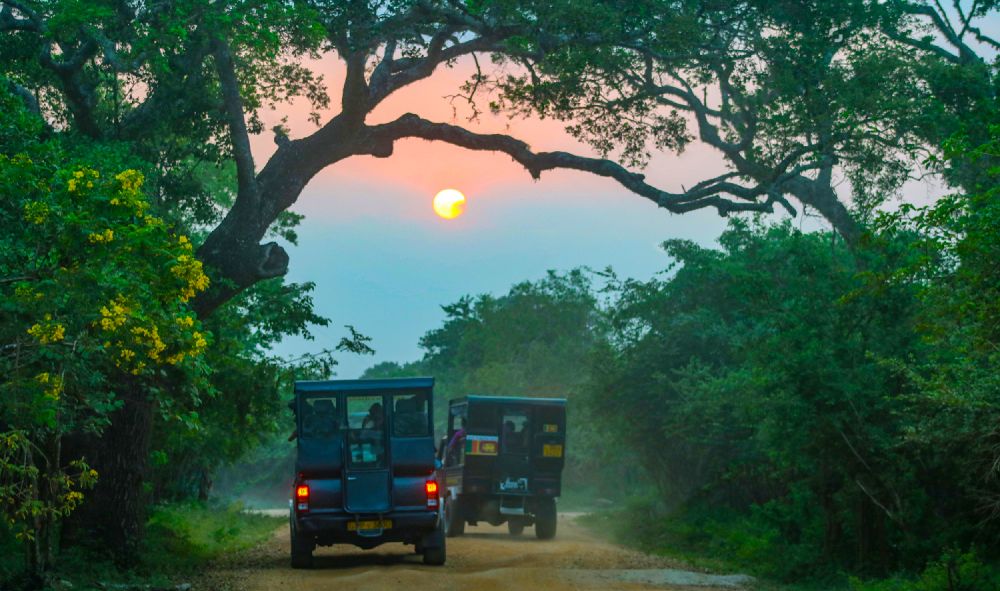north-west coast
Sum up
The north-west coast begins with the popular beach resort of Negombo – only a few miles from the international airport – but venture further north for whale and dolphin spotting, game parks and lagoons. Negombo apart, the remote coastal towns to the far north, Kalpitiya and Mannar, remain untouched by mass tourism. Wilpattu is arguably Sri Lanka’s most scenic national park, the seas off the coast of Kalpitiya are home to dolphins and whales while Mannar is a haven for exotic migrant birds from October to March. A largely unchanged region awaiting discovery.
Weather
Negombo follows the weather patterns of Colombo, only 20 miles to the south, and has its best weather between December and April, also being affected by the south-west monsoon which brings rain from May to July. By the time you travel up the north-west coast as Mannar, however, the picture is much more different: a dryer landscape for much of the year with the bulk of the rain falling from October to December – a weather pattern typical of the north-east monsoon. There is also an inter-monsoonal period of unsettled weather in October.
Highlights
- Secluded palm-fringed beaches of Alankuda
- Negombo’s catamarans with their bellowing sails
- Dutch canals, colonial churches and forts of the north west
- Whales and dolphin spotting off the coast of Kalpitiya
- Flocks of pink flamingos in Mannar during the birding season
- Wilpattu’s elusive leopard and sloth bear
Getting There
The north-west coast, beginning from Negombo, is easily reached from the Bandaranaike International Airport in Katunayake. Negombo is only 15 minutes from the airport and less than hour from the capital. Heading north up the A3, you can either head up a narrow land strip to Kalpitiya, or reach Wilpattu game park and Mannar by remaining on the main A3.
Kalpitiya
The deep sea off the Gulf of Mannar in Kalpitiya is home to dolphins, whales, stingrays and several species of Marine turtles. Watersports are also available along these sandy spits, none more anticipated than an annual kitesurfing competition up the north-west coast. The peninsula is nearly 50kms long and 6-8 kms wide and is a world away from the busier parts of Sri Lanka.
Negombo
Old fishing crafts such as the `oruwa’ or catamaran with its bellowing sails, are used by Negombo’s fisherman and is characteristic to this part of the island. The majestic view of the catamarans as it sets sails into the sunset is a wonderful sight.
Negombo lagoon
Sri Lanka’s largest salt-water wetlands, the Muthurajawella marshes, lies south of Negombo lagoon. A century’s old network of canals, linking Colombo’s seaport to Negombo, still function as active waterways and can be explored by boat, or by cycling or walking along sections of the path.
Wilpattu National Park
North east of Puttalam is the beautiful Wilpattu National Park, with a chance to see leopards, elephants, sloth bear, water buffalo, deer and many birds. Covering an area of 131,000 hectares from the Northwestern coast to the north-central province, Wilpattu is one of Sri Lanka’s oldest wildlife parks. Situated away from the common tourist routs, Wilpattu is unspoilt and can be enjoyed in tranquil seclusion. What it may lack in animal stocks it makes up for in tranquillity.
History
The coastal towns just north of Colombo, including Negombo, Marawila, Chilaw, Kalpitiya and Puttalam, rich with cinnamon and spices, have attracted traders since the 5th century. Many of those traders settled in the area, including the Portuguese and Dutch in more recent history.
Negombo Lagoon provided a sheltered sanctuary for all kinds of naval vessels. The Portuguese converted much of the population of Negombo to Roman Catholicism which remains strong today. There are many churches to be found in Negombo, and a certain area is even referred to as ‘Little Rome’ to the different architecture.
The Portuguese converted much of the population of Negombo to Roman Catholicism which remains strong today. There are many churches to be found in Negombo, and a certain area is even referred to as ‘Little Rome’ to the different architecture. Kalpitiya was known by the ancient Tamils as Kav Putti and was a popular hub for Arab merchants. In 1544 the Portuguese invaded and renamed it Kardiv Island. In an effort to free the port from the Portuguese the King of Kandy, King Rasjasinha II, sought assistance from the Dutch, who in 1659 conquered the area but betrayed him. Instead, they commenced construction of a fort which was completed in 1676. The fort ramparts and ruins are well worth a look.
Café Enviro – Negombo
A tiny, charming café that is great for lunch or coffee and cake (277 Lewis Place, Negombo 11500, 0777 825 211)
Café Zen – Negombo
A homely café in a peaceful garden setting serving a range of healthy dishes including gluten-free and vegan options (164 Lewis Place, Negombo 11500, 0776 493 918)
The Hanger – Negombo
This simply-decorated restaurant is recognised as one of Negombo’s best restaurants, particularly if you are hankering after local or Asian cuisine (Poruthota Road, Ettukala, Negombo 11500, 0771 450 505)
Greek Grill – Negombo
This speciality restaurant does what it says on the tin – and does it well (Poruthota Road, Ettukala, Negombo 11500, 0312 273 899)
Black Coral – Negombo
Part of the Jetwing Beach hotel, Black Coral is one of Negombo’s more upmarket restaurants with a pleasant atmosphere and great service. A variety of cuisine is on offer as well as a wide range of alcoholic and non-alcoholic beverages (Jetwing Beach, Negombo 22100, 0312 273 500)
Toro Pub & Restaurant – Negombo
Whilst food reviews are mixed, this friendly pub is a great spot for relaxed drinks (71 Beach Road, Negombo 11500, 0715 999 966)
Salt Restaurant – Negombo
It has an open kitchen so that diners can watch the chefs creating speciality Italian and seafood dishes. One of the best restaurants for both quality of food and ambience (11/A St. Jude Lane, Negombo 11500, 0314 939 466)has an open kitchen so that diners can watch the chefs creating speciality Italian and seafood dishes. One of the best restaurants for both quality of food and ambience (11/A St. Jude Lane, Negombo 11500, 0314 939 466)
Rodeo Pub & Restaurant – Negombo
A lively and atmospheric spot for pre- / post-dinner drinks (35A Poruthota Road, Ettukala, Negombo 22100, 0312 274 713)
Dolphin Beach Resort – Kalpitiya
This beachside hotel has a wonderfully peaceful atmosphere, and the open- sided rustic restaurant serves a range of high-quality local and western fare including great options for children (Illanthadiya, Alankuda, Kalpitiya, 0327 388 050)
Udekki – Kalpitiya
An open-air sea-facing restaurant which specialises in Italian and Mediterranean dishes (Palmyrah Road, Alankuda, Kalpitiya, 0777 274 349)
Snapshot
Colombo is in an exciting phase in its history. There is a sense of renewed ambition now that peace has been restored to Sri Lanka, but it remains a compact, manageable coastal city offering excellent value and an atmosphere all of its own. Ancestral mansions stand side-by-side with modern hotels springing up into the skyline. Street bazaars buzz right next to a few modest shopping malls. While some roads are clogged with vehicles, there remain many sleepy tree-lined boulevards. Colombo might be mildly chaotic at times but it has at its heart a relaxed and genial air.
Weather
Sri Lanka is affected by two separate monsoons which generally means that there is usually good weather somewhere on the island. Global warming has made weather patterns less reliable, but essentially the main south-west (“yala”) monsoon brings rain to the west (including Colombo) and south-west coasts and hill country largely between May and July. The less severe north-east (“maha”) monsoon hits the east coast – including the cultural triangle – predominantly from November to January. There is also an inter-monsoonal period of unsettled weather preceding the Maha monsoon in October during which heavy rainfall can occur anywhere across the island, Colombo very much included.
Art Galleries
Permanent collections & temporary art exhibits of Sri Lankan artists are held regularlyat the National Art Gallery, Sapumal Foundation, the Lionel Wendt, Barefoot Art Gallery and ParadiseRoad Gallery Café.
History
Colombo is the commercial capital of Sri Lanka and lies alongside the present administrative capital, Sri Jayawardenepura, Kotte. Colombo’s port was influential as early as the 5 th century when ships from Rome, Arabia, and China traded with Sinhalese kings for food supplies, spices and jewels. Many nations fought for the island’s treasures including Arab settlers in the 8C, followed by the Portuguese, the Dutch and, finally, the British who captured Colombo in 1796. This era of western domination ended peacefully with independence in 1948, followed by a separatist war fought by the LTTE (Liberation Tigers of Tamil Eelam) that lasted 25 years. Terrorism was eradicated in 2009, bringing hopes of a lasting peace. Throughout it all, the city of Colombo remained relatively stable and, as well as the majority Sinhalese, Moors, Tamils, Burghers, Chinese, and Malay populations contribute towards its colourful fabric.
Food in Colombo
Food is a highlight of Colombo. The city boasts a wide range of fantastic cafés and restaurants serving cuisine from around the world, whilst smaller eateries serve local hawker-style favourites like string hoppers, lamprais and biryani, as well as spicy pastries including Chinese rolls, seeni-sambol buns and fish patties which are collectively known as short-eats. Some of the best street food is foundon the seafront at Galle Face Green, including delicious koththu roti and isso wade (prawn dumplings).
For a more in-depth experience of local fare, go on our Colombo Street Food Walk.
For a selection of our favourite cafés, bars and restaurants in Colombo, see our Colombo Restaurants Guide. Further recommendations can be found in our comprehensive Booking Information.
Popular Activities
Muthurajawela Wetlands Sum up The Muthurajawela Wetlands is a coastal wetland which together with the Negombo lagoon to the immediate north forms …
Wilpattu National Park Sum up Wilpattu National Park is a contender as the most beautiful national park in Sri Lanka – and …
Birdwatching on Mannar Island Sum up Mannar Island is one of the best spots in Sri Lanka for spotting migratory birds, as …
6 Best Water-Sport Activities in Sri Lanka Sum up The tropical island of Sri Lanka is a great place for water-sports, with …
Kitesurfing in Sri Lanka Sum up Kalpitiya is not just the finest kite surfing destination in Sri Lanka, it is also one …
Scuba Diving in Sri Lanka Sum up Sri Lanka’s western, southern and eastern coastal belts are prime spots for scuba diving. Swim …
Windsurfing in Sri Lanka Sum up Sri Lanka’s surrounding Indian Ocean waters are ideal for windsurfing, and the monsoon weather patterns are …
Anawilundawa Wetlands Sum up Anawilundawa, meaning ‘seven wetlands or tanks’ in Tamil, is the second largest Ramsar wetland in Sri Lanka. This …

